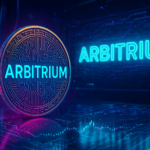In the latest developments surrounding the XRPL blockchain, a significant proposal has emerged that may shift the dynamics for corporate investors. The proposal, known as Clawback, endows issuers with new powers to retrieve distributed assets in particular situations. This comes at a time when XRP Coin, despite being a major altcoin, has witnessed a price slump, falling below the pivotal $0.5 threshold. The overarching question is whether this proposed feature will serve as a catalyst for an upturn in XRP’s market price.
Introducing New Capabilities
The Clawback feature is designed to provide issuers with the means to recover funds amidst incidents like account access loss or fraudulent transactions. An overwhelming 94% consensus among validators backs the integration of Clawback. Ripple’s Chief Technical Officer, David Schwartz, highlighted the utility of this feature in settling legal disputes and executing court orders, differentiating it from XRPL’s existing Freeze feature.
Examining the Advantages and Drawbacks
The introduction of the XRP Clawback brings with it a range of benefits and drawbacks. On the upside, it allows issuers to retract assets without freezing all funds during security incidents, reverse transactions with tokenized assets when laws change abruptly, and withdraw and reissue assets when required, thereby enhancing the network’s appeal to institutional entities. Conversely, the feature’s potential to undermine transaction irreversibility and pivot towards centralization could attract criticism, raising concerns over issuer interference with user assets.
Prospects for XRP Coin’s Market Performance
The market’s response to the Clawback proposal could follow two trajectories. On one hand, enhanced trust from institutions and regulatory alignment could invigorate network activity and bolster the altcoin’s value. On the other hand, apprehensions about reduced user autonomy and centralization could exert a downward pressure on prices. Yet, the concern over centralization may hold less sway over the majority of investors, who often prioritize network activity, growth prospects, and the potential for price appreciation over such criticisms, as evidenced by other networks with similar functionalities.












